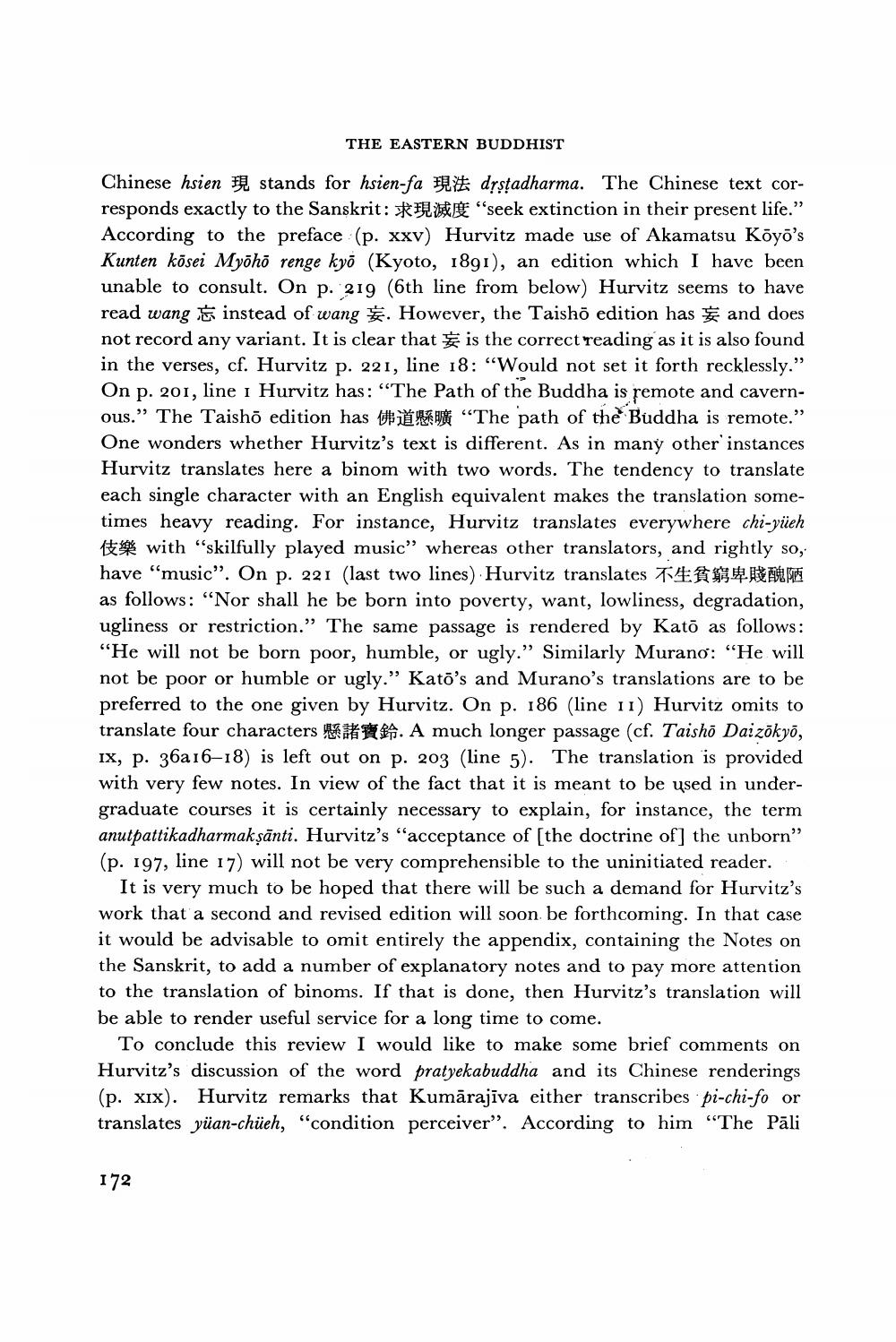Book Title: Book Reviews Of Scripture Of Lotus Blossom Of Fine Dharma Author(s): J W De Jong Publisher: J W De Jong View full book textPage 4
________________ THE EASTERN BUDDHIST Chinese hsien stands for hsien-fa dṛṣṭadharma. The Chinese text corresponds exactly to the Sanskrit: "seek extinction in their present life." According to the preface (p. xxv) Hurvitz made use of Akamatsu Kōyō's Kunten kōsei Myöhō renge kyō (Kyoto, 1891), an edition which I have been unable to consult. On p. 219 (6th line from below) Hurvitz seems to have read wang instead of wang. However, the Taishō edition has and does not record any variant. It is clear that is the correct reading as it is also found in the verses, cf. Hurvitz p. 221, line 18: "Would not set it forth recklessly.' On p. 201, line 1 Hurvitz has: "The Path of the Buddha is remote and cavernous." The Taishō edition has "The path of the Buddha is remote." One wonders whether Hurvitz's text is different. As in many other instances Hurvitz translates here a binom with two words. The tendency to translate each single character with an English equivalent makes the translation sometimes heavy reading. For instance, Hurvitz translates everywhere chi-yüeh with "skilfully played music" whereas other translators, and rightly so, have "music". On p. 221 (last two lines) Hurvitz translates 404M as follows: "Nor shall he be born into poverty, want, lowliness, degradation, ugliness or restriction." The same passage is rendered by Katō as follows: "He will not be born poor, humble, or ugly." Similarly Murano: "He will not be poor or humble or ugly." Katō's and Murano's translations are to be preferred to the one given by Hurvitz. On p. 186 (line 11) Hurvitz omits to translate four characters. A much longer passage (cf. Taishō Daizōkyō, Ix, p. 36a16-18) is left out on p. 203 (line 5). The translation is provided with very few notes. In view of the fact that it is meant to be used in undergraduate courses it is certainly necessary to explain, for instance, the term anutpattikadharmakṣānti. Hurvitz's "acceptance of [the doctrine of] the unborn" (p. 197, line 17) will not be very comprehensible to the uninitiated reader. It is very much to be hoped that there will be such a demand for Hurvitz's work that a second and revised edition will soon be forthcoming. In that case it would be advisable to omit entirely the appendix, containing the Notes on the Sanskrit, to add a number of explanatory notes and to pay more attention to the translation of binoms. If that is done, then Hurvitz's translation will be able to render useful service for a long time to come. To conclude this review I would like to make some brief comments on Hurvitz's discussion of the word pratyekabuddha and its Chinese renderings (p. xix). Hurvitz remarks that Kumārajīva either transcribes pi-chi-fo or translates yuan-chüeh, "condition perceiver". According to him "The Pāli 172 55Page Navigation
1 2 3 4 5 6
